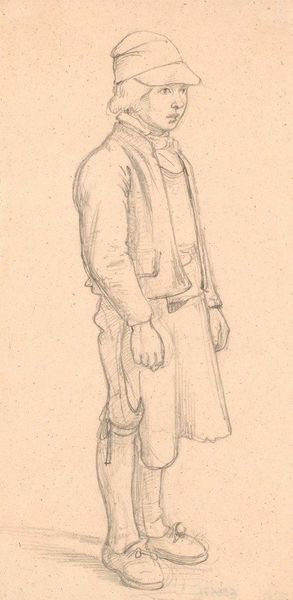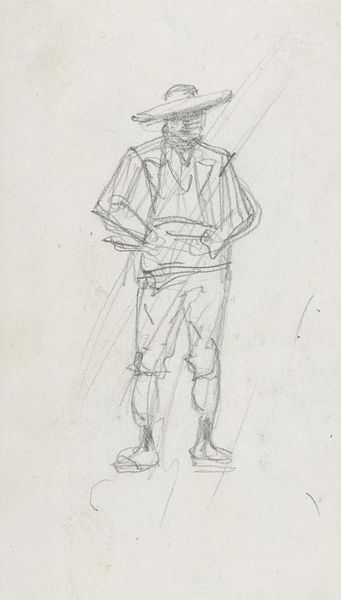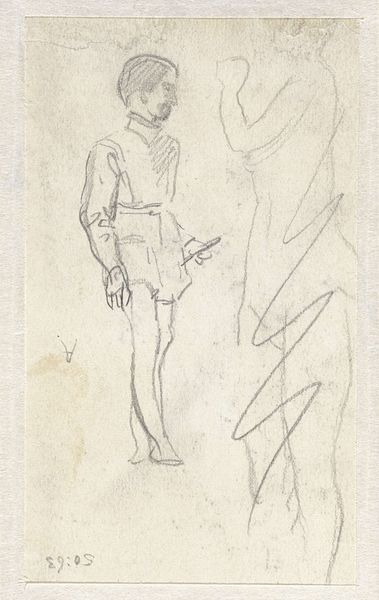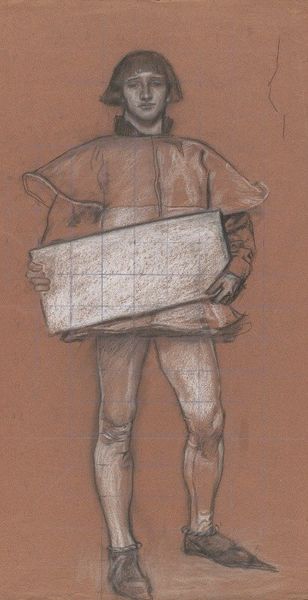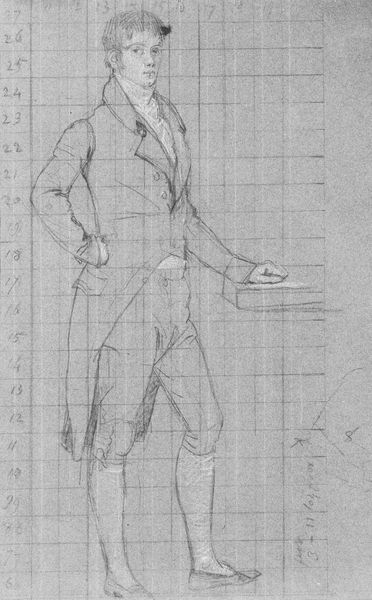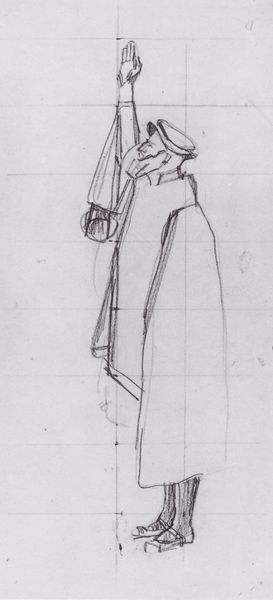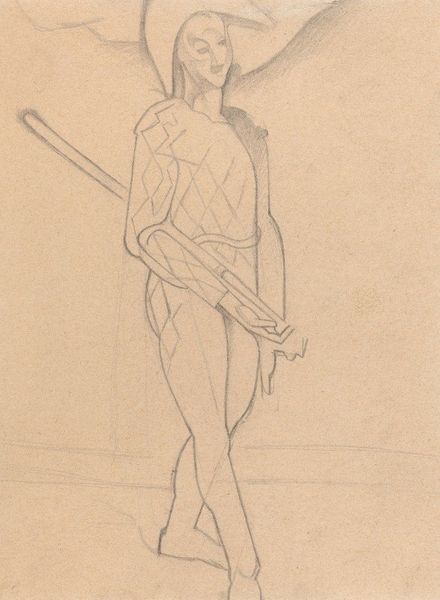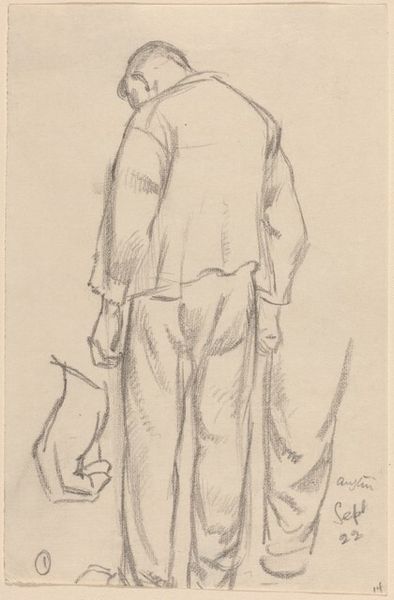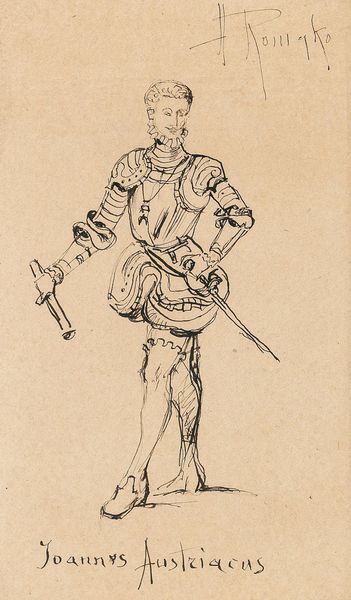
drawing
#
drawing
#
comic strip sketch
#
imaginative character sketch
#
sketch book
#
personal sketchbook
#
idea generation sketch
#
sketchwork
#
character sketch
#
sketchbook drawing
#
portrait drawing
#
storyboard and sketchbook work
Copyright: Public Domain: Artvee
Editor: Here we have Wilhelm Marstrand's 1851 drawing, "Stående dalkarl med armene overkors," or "Standing man from Dalarna with his arms crossed." It's a quick sketch, almost comical, with this guy’s puffed sleeves and decorated breeches. What stands out to you when you look at this work? Curator: It's a fascinating look at how national identity was being constructed and circulated in the mid-19th century. Consider the "dalkarl," the man from Dalarna. He’s presented here in what appears to be traditional dress. But, was this actually everyday clothing or was it a costume? Think about the role artists played in shaping and popularizing images of regional and national identity. Editor: So, you're saying this isn't necessarily a straightforward depiction of reality? Curator: Precisely. It's mediated. Marstrand, as an artist showing his work, is actively participating in constructing an image of Swedishness. It begs the question: Who is this image for? Is it for the people of Dalarna themselves, or is it aimed at a broader, perhaps urban, audience eager for romanticized images of rural life? Editor: That's a really interesting point about the intended audience shaping the image. Did these sketches contribute to a broader narrative? Curator: Absolutely. They circulated, often through prints, exhibitions, and publications, contributing to a national narrative that was increasingly important in a time of political and social change. What purpose did this romanticized nationalism serve? Was it consolidating power? Fostering social cohesion? These images were never neutral. Editor: I never considered the power dynamics embedded in what seems like a simple drawing. Curator: That’s precisely the point. Even a quick sketch like this can be read as a social and political document, revealing much about the construction and dissemination of national identity through art. I’ll never see this artwork the same again!
Comments
No comments
Be the first to comment and join the conversation on the ultimate creative platform.
